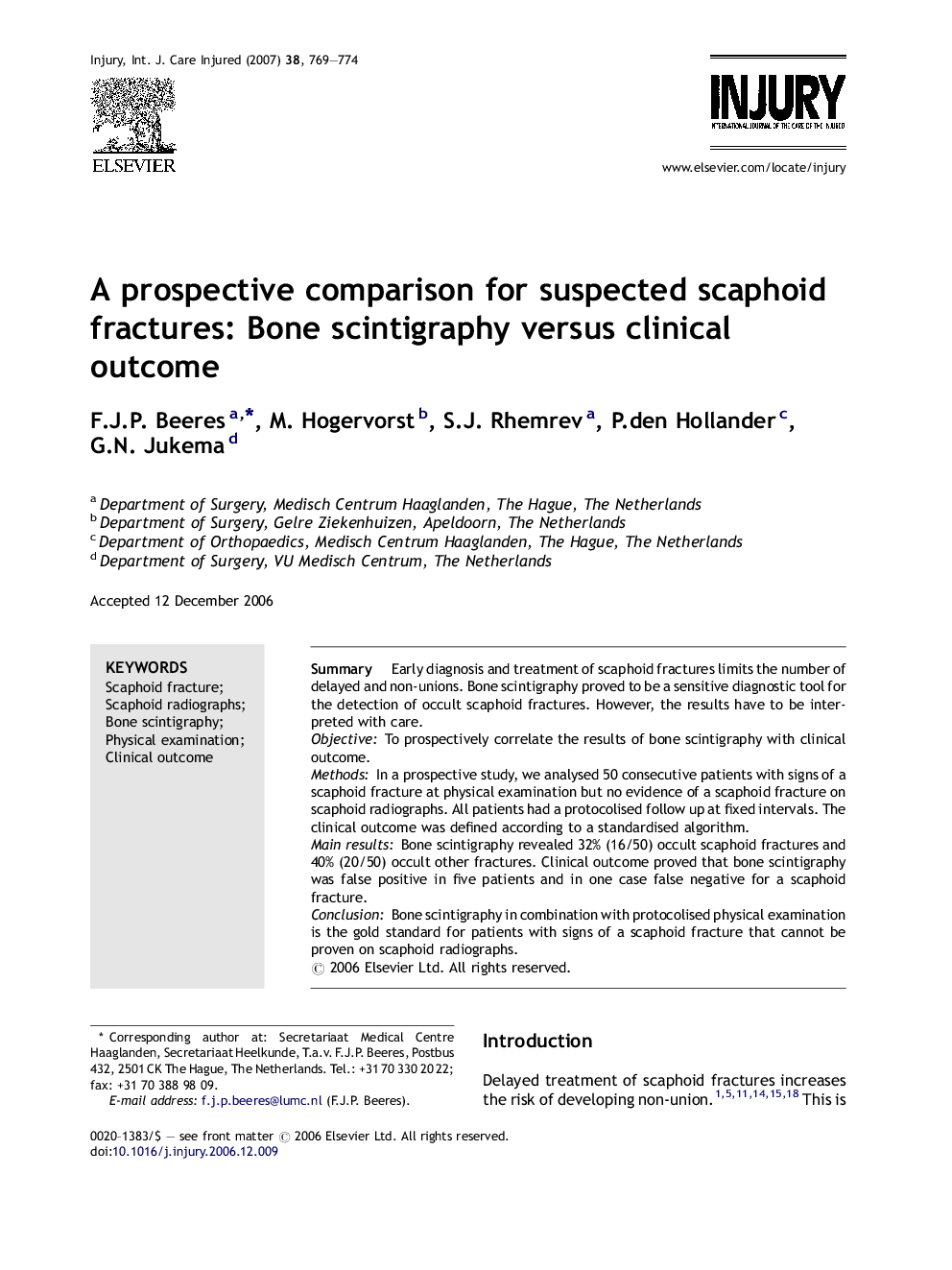| Article ID | Journal | Published Year | Pages | File Type |
|---|---|---|---|---|
| 3242293 | Injury | 2007 | 6 Pages |
SummaryEarly diagnosis and treatment of scaphoid fractures limits the number of delayed and non-unions. Bone scintigraphy proved to be a sensitive diagnostic tool for the detection of occult scaphoid fractures. However, the results have to be interpreted with care.ObjectiveTo prospectively correlate the results of bone scintigraphy with clinical outcome.MethodsIn a prospective study, we analysed 50 consecutive patients with signs of a scaphoid fracture at physical examination but no evidence of a scaphoid fracture on scaphoid radiographs. All patients had a protocolised follow up at fixed intervals. The clinical outcome was defined according to a standardised algorithm.Main resultsBone scintigraphy revealed 32% (16/50) occult scaphoid fractures and 40% (20/50) occult other fractures. Clinical outcome proved that bone scintigraphy was false positive in five patients and in one case false negative for a scaphoid fracture.ConclusionBone scintigraphy in combination with protocolised physical examination is the gold standard for patients with signs of a scaphoid fracture that cannot be proven on scaphoid radiographs.
